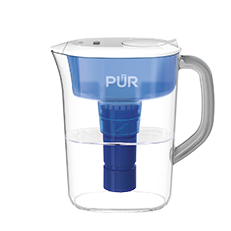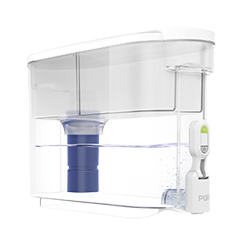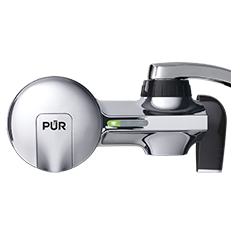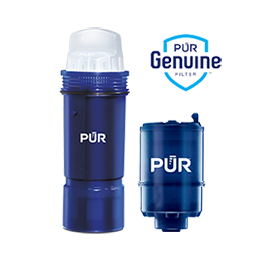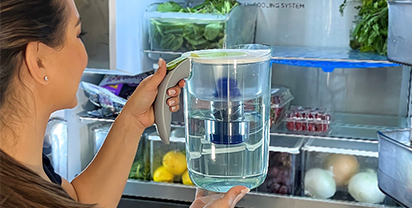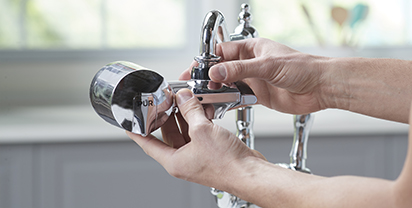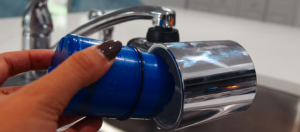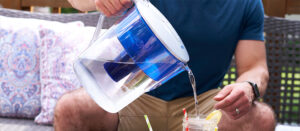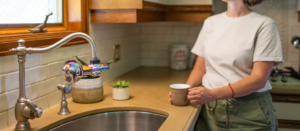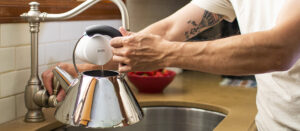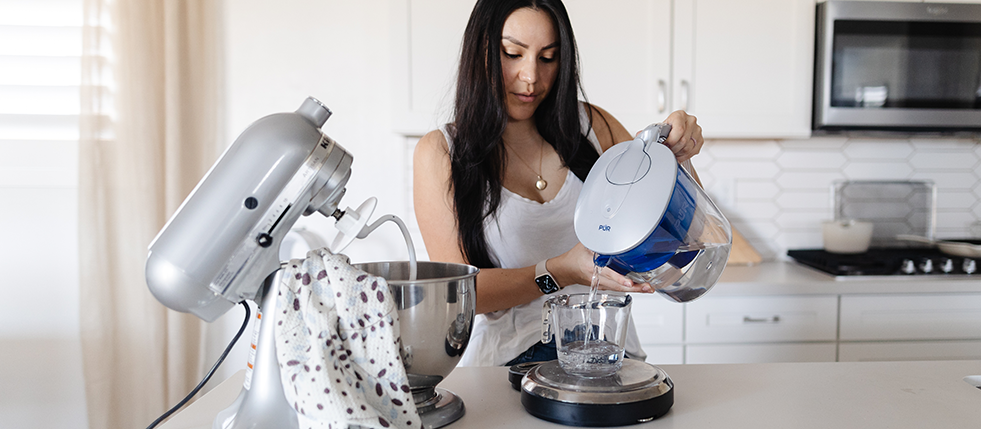There’s no doubt water has universal importance. But, just as water is a precious ingredient to our landscape and bodies, it’s also a very precious ingredient in our kitchen. Some form of water is always used in the cooking or baking process. Therefore, we must recognize the integral role it plays in our recipes and how it can directly affect the outcome of our home-cooked meals.
Admittedly, I’ve boiled pasta in the water to the point where it sticks together in one big clump. I’ve watched numerous pots boil over onto my stovetop. I’ve also managed to kill my baker’s yeast by adding water that was too hot, so my bread never rose properly. These kitchen blunders forced me to value water. Water quality should command the same amount of attention in your recipes as flour does for your cakes and eggs for your omelets.
To the naked eye, plain water looks just like, well, plain water. Is it the lack of vibrant color, lack of texture, or lack of flavor that causes us to downplay its role in recipes? Just because it’s not purple, or it doesn’t come shredded or isn’t sticky, doesn’t mean we should disregard water’s importance in the kitchen.
Before doing anything, it’s helpful to have a general working knowledge about the water you’re using in your kitchen. Not all water is created equal. There could be chemical and mineral factors in your water that can alter your dish’s outcome. For instance, I grew up on well water. Because the water came in constant contact with rocks and soil, it was deemed “hard.” Hard water basically means that it contains increased levels of calcium and magnesium. Conversely, soft water contains decreased amounts of these minerals. While neither is good or bad, each can alter your food. Using hard water in homemade bread actually benefits the bread’s yeast fermentation, making the dough stronger. I noticed this difference first-hand when I made Amish White Bread with hard water in the suburbs and then replicated the same recipe in the city with soft(er) water. My family opted for the suburban version, claiming the city version was too doughy and tasted “raw” in the center.
If you receive your water from a ground well, or if you live in a city, chances are your water contains increased levels of chlorine. (Don’t fret -Federal law requires all cities in the U.S. to treat drinking water with chlorine to kill bacteria and microbes.) Your tap water may even have an odor. Or it may not even taste right. These increased chemical levels will certainly alter your dish’s outcome. If you’re suspicious about your tap water and its chlorine levels, you do have some easy alternatives before you cook with it. You can use bottled water in your recipes, though it can contain contaminants from plastic. Or you can keep your tap water in an open-air container for at least 24 hours, allowing the chlorine to escape. Or, you can simply use filtered water to save precious time and alleviate any of the guesswork.
Because filtering water removes impurities, including lead and other contaminants from aging pipes and faucets, many argue that it’s better. Consequently, if you’re making a recipe where water is a key ingredient – especially soups, stews, and drinks – use filtered water in lieu of tap. Better quality water begets better quality food. It goes for your kitchen prep work too. When washing your ingredients, use the purest possible water.
As an ingredient in our kitchen, water is often taken for granted, but it plays so many significant roles in the baking and cooking process that it’s necessary to have a general understanding of its properties and functions. Once water gets the attention it deserves, the quality of your dishes will undoubtedly improve.
Amish Bread
adapted from allrecipes.com
Original recipe makes 2 – 9×5 inch loaves
Ingredients:
2 cups filtered warm water (110 degrees F/45 degrees C)
2/3 cup white sugar
1 1/2 tablespoons active dry yeast
1 1/2 teaspoons salt
1/4 cup vegetable oil
6 cups bread flour (I used regular flour)
1/2 cup dried cranberries
2 tablespoons butter, melted
1/4 cup ground cinnamon
Instructions:
1. In a large bowl, dissolve the sugar in warm water, and then stir in yeast. Allow proofing until yeast resembles creamy foam.
2. Mix salt and oil into the yeast. Mix in flour one cup at a time. Add in cranberries. Knead dough on a lightly floured surface until smooth. Place in a well-oiled bowl, and turn dough to coat. Cover with a damp cloth. Allow rising until doubled in bulk, about 1 hour.
3. Punch dough down. Knead for a few minutes, and divide in half. Shape into loaves, and place into two well oiled 9×5 inch loaf pans. Baste tops with melted butter and sprinkle on ground cinnamon. Allow to rise for 30 minutes, or until the dough has risen 1 inch above pans.
4. Bake at 350 degrees F (175 degrees C) for 30 minutes
Smoky Tomato Soup with Maple-Candied Bacon
Adapted from The Pip and Ebby Messy Kitchen and Food and Wine
Servings: 4
Ingredients:
8 slices of thick-cut Applewood-smoked bacon (approximately 8 ounces)
2 tablespoons brown sugar or maple syrup
2 tablespoons unsalted butter
1/4 cup extra-virgin olive oil
1 small onion, finely chopped
2 large garlic cloves, minced
1 1/2 tablespoons tomato paste
3 tablespoon granulated sugar
1 teaspoon smoked paprika
Kosher salt and fresh ground pepper
1/2 cup dry wine
Two 15-oz. cans chopped tomatoes
2 cups of filtered water
1/4 cup fresh orange juice
3 tablespoons sour cream
pesto
Instructions:
1. Preheat oven to 400 degrees F. Arrange bacon on parchment paper on the baking sheet and bake for 8 minutes until the pieces are almost crisp.
2. Drain the oil from the baking sheet and sprinkle the crisp bacon with brown sugar/maple syrup and bake another 8 minutes. Let cool.
3. In a saucepan, melt the butter in the olive oil. Add the chopped onion and cook over high heat until softened, 5 minutes. Add the garlic and cook over moderate heat for 30 seconds. Add the tomato paste and cook, stirring until darkened, about 2 minutes.
4. Stir in the granulated sugar, the smoked paprika, 1 teaspoon of salt and a 1/4 teaspoon of pepper and cook for 30 seconds.
5. Add the wine and bring to a boil. Add the tomatoes with their juices; bring to a simmer. Remove from heat.
6. Stir the water, orange juice, and sour cream into the saucepan. Working in batches, puree the soup until smooth.
7. Return the soup to the saucepan; season with salt and pepper and add in the bacon pieces.
8. Reheat and ladle into bowls. Add a dollop of sour cream or a spoonful of pesto to the top.
9. The soup can be served chilled.

